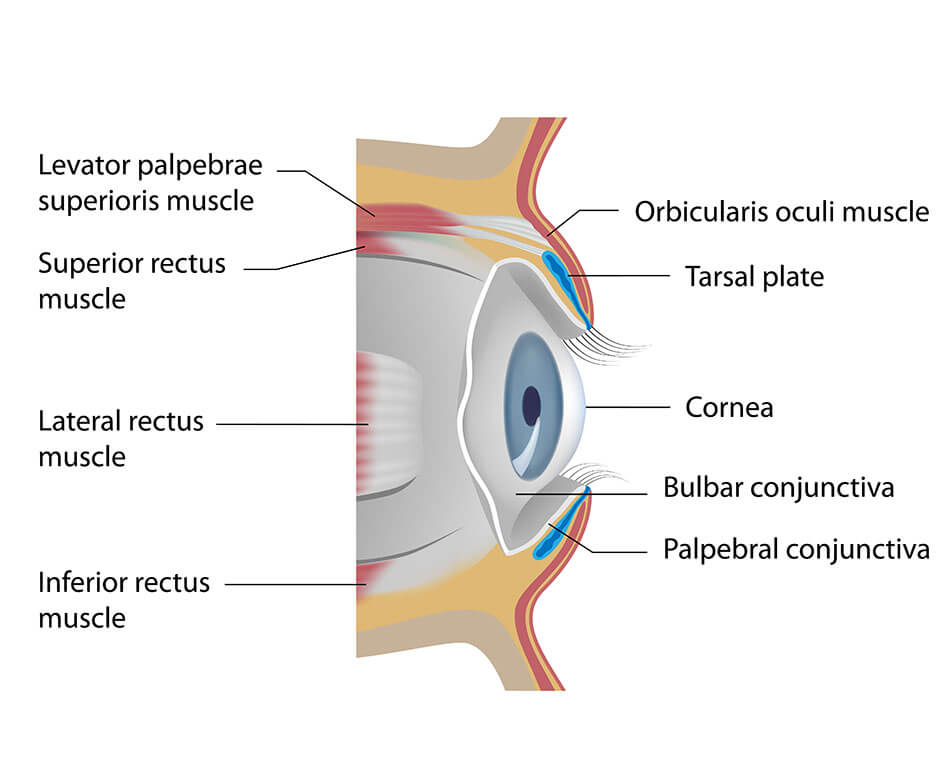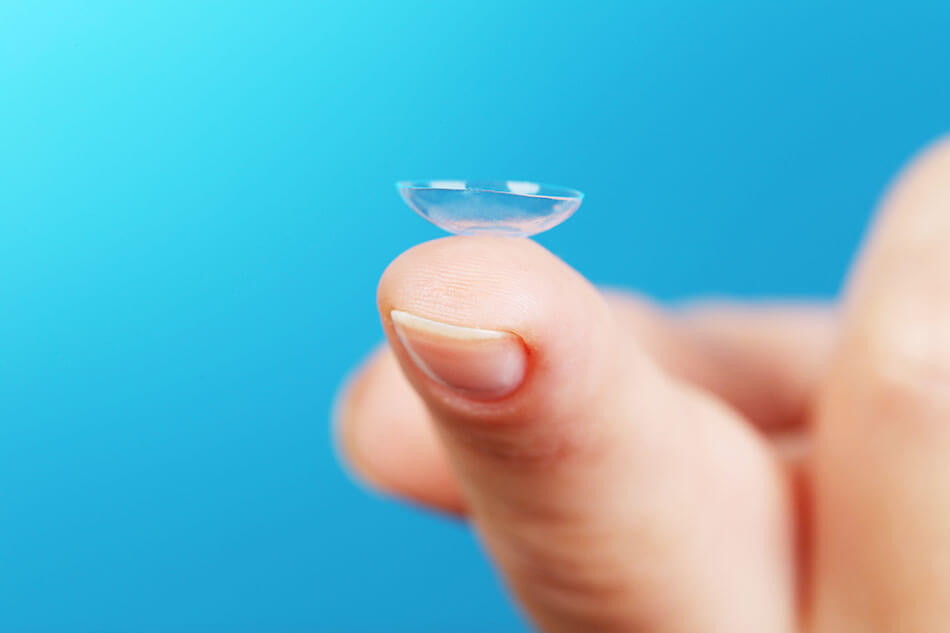Can a Contact Get Stuck in Your Eye? 6 Emergency Tips if You Get a Contact Lens Broken or Stuck in Your Eye

Contact lenses are a convenient alternative to glasses, but like anything delicate, they require careful handling. Many wearers wonder: can a contact get stuck in your eye? The answer is yes, but it is not as scary as it sounds.
Contacts can sometimes slip out of place or even tear, but with the right steps you can remove them safely and protect your eyes. This guide explains how contacts get stuck, what happens if they break, and six emergency tips to follow.
Can a Contact Lens Get Stuck Behind Your Eye?
One of the biggest fears for new contact lens wearers is that a lens can get lost behind the eye. Thankfully, that is impossible.
- Your eyelids connect to your eye with a thin tissue called the conjunctiva.
- This creates a natural barrier that prevents anything, including contacts, from slipping behind the eyeball.
If a lens slips, it may get stuck under your eyelid, which feels uncomfortable but is not dangerous. Both soft and gas permeable contacts can be removed safely with the right technique.

Can Contact Lenses Break?
Yes, contact lenses can rip or break if they are not handled correctly.
- Beginners sometimes tear lenses when learning to insert or remove them.
- Older lenses are more fragile and more likely to rip.
- Some lens materials are more delicate than others.
Always follow the replacement schedule recommended by your eye doctor and inspect your contacts before use.

6 Emergency Tips for Broken and Stuck Contact Lenses
So what happens if your contact rips or gets stuck in your eye?
The most important thing is to stay calm. Remember, a stuck contact lens won't damage your eye.
Here's a quick look at six emergency tips for broken and stuck contact lenses.
1. Never Wear a Torn or Broken Contact Lens
Never put a ripped or broken contact lens in your eye. It might feel normal, but torn edges can scratch your cornea. The surface of your eye is delicate, and even a small tear can be painful and uncomfortable.
A ripped contact also can't keep the right curvature shape of your eye. This can make it slide around the surface of your eye, leading to blurry vision. Not only that, a lens that moves around too much can get stuck under your eyelid.
Pieces of a damaged contact can break off in your eye. Even after removing the lens, you might have small pieces of contact left in your eye. These pieces are sometimes hard to spot and difficult to get back out.
2. Inspect Your Contacts Before You Put Them in Your Eyes
Before you put your contacts in your eye, you should hold it on the tip of your finger and inspect it for rips or other damage. These tears, chips, or jagged edges will be small, so make sure you get a close look.
If you find any damage, throw the contact in the trash and get a new pair. It's always helpful to have a pair of backup eyeglasses with you in case your contacts rip.
It's also possible for a contact to rip after putting it in your eye. If this happens, take the lens out right away.
3. Remove Broken Pieces of Your Contact
You should remove any broken pieces of contact from your eye as soon as you realize it's there. This process can be difficult, especially if the broken pieces are small.
Try using the tip of your finger to push the piece of the lens to the edge of your eye. From there you might be able to pull it out. If you can't get the piece out on your own, make an appointment with your eye doctor as soon as possible.
They'll use different colored dyes and microscopes to find the piece and remove it safely.
If you notice a piece of your contact lens is missing but don't see it in your eye, you should visit your eye doctor anyway. The piece might be too small for you to find on your own.
4. Rinse Your Eye With Eye Drops
If your contact gets stuck under your eyelid, the best way to get it back out is by using eye drops.
Make sure you put enough drops in your eye so it is full of moisture. This will make it easier for the contact to move around.
After rinsing your eye with eye drops, start massaging your eyelid. Don't use any force. Instead, use gentle movements to dislodge the contact. Once the contact is freed, remove it like normal. Lift your eyelid and turn it inside out to make sure there aren't any broken pieces of contact left inside. Clean your eye out with a saline solution when you're done.
It’s important to note that using tap water is not recommended to moisten or flush out the eyes. This can lead to unwanted bacteria entering the eye and causing infection.
5. Learn How to Handle Contacts
If you're still learning how to use your contacts, you should keep your fingernails trimmed. Don't use your fingernails to grab the contacts when putting them in and taking them out.
Never pinch the middle of your contact lenses. Pinching can lead to tearing and breakage in the center of your contact.
Make sure each contact is floating in solution before you close your case. A contact lens that's hanging from the edge of your case could break when you close the lid.
6. Visit Your Eye Doctor
Don't hesitate to visit your eye doctor if you have a contact emergency. They'll be able to remove broken pieces of contact lenses and take out lenses that are stuck. In either case, they can assess the issue and manage it properly.
But don't wait.
If you can't resolve the issue on your own, you should make an appointment with your doctor as soon as you can or visit a medical facility.
It’s common for contact lens wearers to have to replace their lenses due to a break or scratch. With daily, weekly, and monthly wear contacts available, it’s not long before a replacement is on the way anyhow.
While contacts can get stuck on the surface of your eye, they can't slide around to the back of your eyeball. In this way, you don’t have to worry about whether a contact lens can get stuck in your eye without the chance of removing it. You can either remove stuck or broken pieces on your own or visit your eye doctor if necessary.
If you don't feel anything in your eye but can't find your contact, don't panic. There's a good chance it fell out without you noticing. Keep an extra pair of contacts or glasses with you at all times. Now you know what to do if you have to deal with a stuck or broken contact lens so you can wear your contacts worry-free!
FAQs: stuck or broken contact lenses
Can a contact lens get lost behind my eye?
No. The conjunctiva prevents lenses or any objects from slipping behind the eyeball.
What should I do if my contact lens breaks in my eye?
Remove the pieces as soon as possible. If you cannot remove them yourself, visit an eye doctor immediately.
How do I get a stuck contact lens out?
Apply lubricating drops to moisten the eye, gently massage your eyelid, and remove the lens once it moves into place.
Can I use water to rinse out my eye if a contact is stuck?
No. Tap water can contain bacteria that may cause infection. Always use sterile saline solution or lubricating drops.
How can I prevent my contacts from tearing?
Keep your nails trimmed, handle lenses carefully, and replace them on schedule as recommended by your doctor.
